SECOND IN A SERIES of preliminary reports
(Translated to Imperial Gothic from High Mahaduyanan)
++MEMORANDUM TO: [REDACTED], Ordo Astartes++
++FROM: Inquisitor Varman Kumar++
++DATE: 3282002.M42++
PER YOUR DIRECTIVE, I am conducting a multi-year investigation of the Adeptus Astartes Chapter known as the “Fighting Tigers of Veda,” to include their successor chapter, the “Sabretooth Tigers.”
Following up my previous report, here is a look at the Tigers’ homeworld, Veda (sometimes called “Vedah” in more recent documents). Veda is the 9th among the 19 planets and dwarf planets of the Bagha (or “Regulus Secundus”) system, which lies east of the Maelstrom, in the Ultima Segmentum.
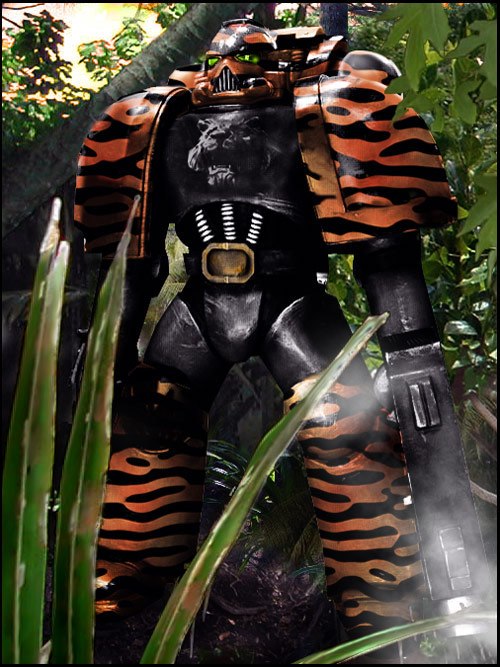
Geography
Veda is a large planet, most of which has a hot climate similar to many tropical and subtropical areas of ancient Terra. There are two large continents, connected by several narrow land bridges, both located in the eastern hemisphere. Scattered islands dot the warm, shallow oceans that cover the rest of the planet.
The northern continent, Mahaduyana, has huge expanses of jungle broken occasionally by wide stretches of grassy plains. In the extreme north are several high mountain ranges, where snow falls year-round. In Mahaduyana can be found titanium, adamantium, coal, and natural gas.
The southern continent, Ghuyarashtra, is roughly twice as large as Mahaduyana. Like Mahaduyana, there are some mountains and jungles, but most of Ghuyarashtra is covered by plains. Because of the rich, black soil and annual summer monsoons, these plains are very fertile. In addition, gold, silver, copper, and diamonds are found here.
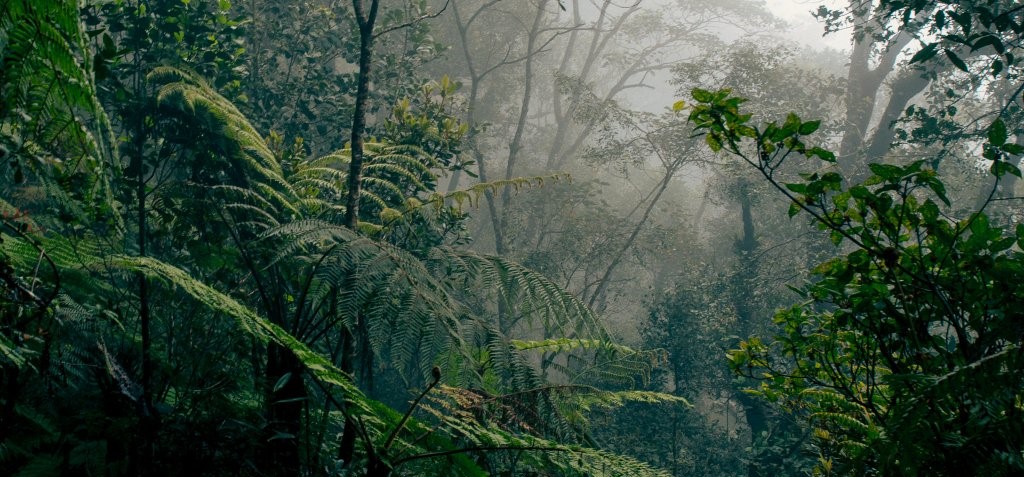
Human Population
Ancient Vedic texts indicate that the planet was settled by humans early in the Age of Technology, in the 15th Millennium. During the Age of Strife, civilization declined to its present status of low technology and agrarian culture. Thus, Veda is classified as a Feudal World.
As I mentioned in my previous report, in the 34th Millennium, the Adeptus Astartes Chapter that became known as the Fighting Tigers successfully liberated Veda from a rogue Drukhari faction, establishing a presence on the planet that has lasted to this day.
The current human population of Veda is approximately 10 million. Settlements consist of small villages dotting both continents, though roughly 60% of the population dwells in Ghuyarashtra. Villages are bound together into clans, and clans into tribes, with no native level of governance above the tribal. Conflicts, even wars between tribes are uncommon, but not unknown.
Each of the several hundred tribes of Veda has traditionally sworn obedience to the leaders of the Tigers, though the Marines have little, if any, involvement with ordinary humans, allowing them to rule themselves and handle their own affairs.
The Fighting Tigers and Veda
After liberating the native people and being granted rule of Veda, the Fighting Tigers split into two factions, one establishing a monastery-fortress (or “durga”) on Mahaduyana, the other doing the same on Ghuyarashtra.
It was widely believed that the Chapter had merely divided its forces to better defend the planet. Numerous documents and accounts name the northern faction as “Jatis Mahaduyana” and the southern as “Jatis Ghuyarashtra,” but both were considered to belong to the same Chapter.
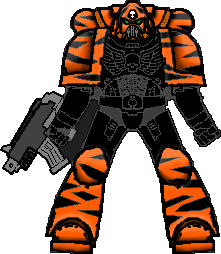
In point of fact, only those Space Marines of the northern faction are the Fighting Tigers of Veda, marked by their distinctive orange-and-black armor. The Space Marines that were erroneously believed to belong to “Jatis Ghuyarashtra” are members of a successor Chapter called the Sabretooth Tigers, whose colors are mustard-yellow and brown.

DESIGNATION: “Tiger of Agni” (Devastator Marine)
Shortly after settling on Veda, the Tigers of both factions quickly adopted the native culture, including names, languages, deities, customs, and traditions, replacing the ones they had before. In lieu of a planetary governor, the two Chapter Masters (or “Rajas”) cooperate on ruling the world and coordinating with the rest of the Imperium.
Caste, the Fighting Tigers, and “Harijan”
Regardless of tribe or location, all native Vedic societies engage in either a four- or five-level caste system, a rigid hierarchal structure that allows for little to no movement among them. The highest caste comprises priests and teachers; the next-lower consists of leaders and warriors. Beneath that are merchants and traders. In a four-tier system, this level is shared with farmers and laborers; in a five-tier system, peasants occupy the next-to-lowest.
Last of all are the “untouchables,” shunned by all of superior caste. Just as there are hundreds of tribes, there are almost as many delineations of which types of persons belong to this caste, and why. Common reasons include being born into a despised ethnic group; holding an occupation considered distasteful (such as those who deal with excrement or offal, or who slaughter animals for something other than sustenance); criminals; harlots; mutants; followers of non-Vedic deities; those who indulge in debased practices; and traitors.
Interestingly, while the two Tiger Chapters adopted almost all native customs, they mostly eschew the Vedic caste system. The exception is that Tigers who are disobedient, negligent, cowardly, or otherwise fail in their sacred duty (or “dharma”), are named as “Harijan,” and are dismissed from the Chapter, exiled to the wilds of Veda. I expound on this topic in my report, “Fighting Tigers of Veda: Organization.”

Agriculture and Commerce
The original settlers of Veda brought with them Terran grains, seeds, and livestock. The current population lives on a diet that mostly consists of rice, legumes, fruit, and vegetables, with little meat: indeed, all the various tribes of Ghuyarashtra are vegetarians. What meat that is consumed is mostly goats, though some poultry, fish, and (rarely) pork are also eaten. Spices, some of them very potent, are used in almost all cooking.
Though wild cattle, descendants of the original livestock brought from Terra, are plentiful, they are not hunted, domesticated, or consumed, as they are considered sacred. This prohibition caused considerable friction, even uprisings, in the past, when non-native officials of the Astra Militarum arrived on Veda to raise regiments (see “Vedic Tiger Warriors,” below).
In addition to foodstuffs and livestock, the original settlers of Veda also brought the genetic codes of several species of Terran fauna that had gone extinct early in the 3rd Millennium. The thought was to resurrect these species in environments similar to their ancestral lands. One species was the oliphant; another was the tiger (or “tyger”). The Vedic tiger has diverged into two distinct species, one located in the northern hemisphere, one in the southern, and has become a sacred and symbolic animal to both Chapters.

Veda has no cities of any appreciable size (see however, “Tharalon,” below). Wooden ocean-going sailing vessels carry most of the trade between the two continents. Long-distance travel over land is arduous, due to difficult terrain (particularly jungles); and dangerous, due to carnivorous animals, bandits, and devotees of the Vedic goddess Kali (see below).
The planet has two spaceports, one on each continent, not far from the respective fortress-monasteries. Staffed by servitors and other thralls of the Tigers, guarded by members of the Planetary Defense Force, the spaceports have the only industrial facilities on this world. Traffic between Veda and the rest of the Imperium was always infrequent, and has become even more so since the opening of the Cicatrix Maledictum.
Religion
The Vedic people revere the Emperor as a god, referring to him as “The Sleeping Brahma” whose dreams shape the universe. They worship several other gods, all of whom, sacred scripture states, are creations of the “Brahman” to reflect his glory. While many of these beliefs do not conform to those of the Ecclesiarchy, they do not overtly contradict them, and the Adeptus Ministorum recognizes the native Vedic religion as an approved cult. Proselytization efforts by Missionaries to convert the native people to more orthodox worship of the God-Emperor have not been successful.
Thuggee of Kali
The Thuggee are native humans belonging to an outlawed cult of Kali, the many-armed Vedic goddess of slaughter known for devouring her own young shortly after birth. Found on both continents, the Thuggee stalk wilderness areas along travel routes, robbing and murdering travelers in the name of their deity, severing the hands of their victims and dangling them from belts that they wear.
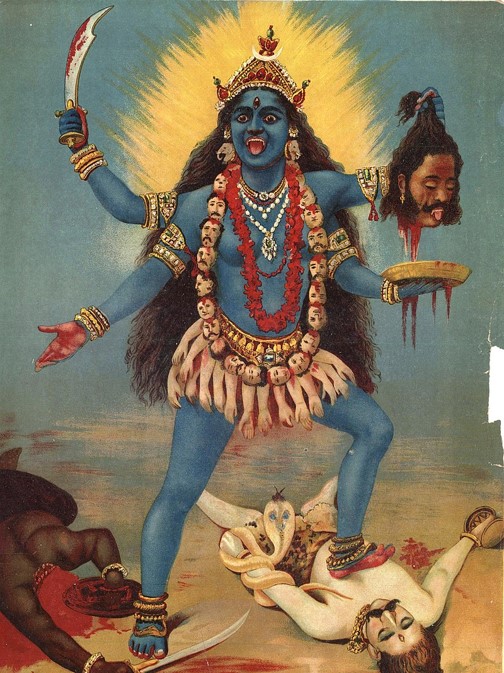
Both Tiger factions consider the Thuggee to be worshippers of Chaos, despite their seeming devotion to Kali. Over the millennia, the Marines have conducted numerous raids on known concentrations of Thuggee, but total and final eradication of this cult has thus far remained elusive. While the Thuggee in one area may be slain and their bloodthirsty practices be quelled for a time, they invariably arise again elsewhere after a period of months, years, or even decades.
Now that the Tigers have, for the most part, left Veda, the duty of suppressing and eliminating the Thuggee has fallen to the Vedic Tiger Warriors.
Vedic Tiger Warriors
In the 41st Millennium, the attention of the Adeptus Administratum turned to Veda, with the directive to raise regiments of the Astra Militarum for service off-planet. After some initial culture shock between the native conscripts and the non-native officers and staff, the first units of “Vedic Tiger Warriors,” as they were named, were formed. Several regiments have since been raised, with millions of Vedic natives serving with distinction in many of the Imperium’s warzones.
In recent years, with the Fighting Tigers/ Sabretooth Tigers spreading out across the galaxy and spending extended time away from Veda, a Planetary Defense Force, also known as the Vedic Tiger Warriors, has been formed.
“Ghost Tygers” and “Rakshasas”
Native belief holds that immaterial beings of various sorts roam the surface of Veda, sometimes interacting with humans. Among these are the “Ghost Tygers,” benevolent spirits of animals who return from death to protect travelers, rescue those in peril, or slay evil-doers. While most of these spirits are the size of humans, some manifest as large as Space Marine Land Raiders.
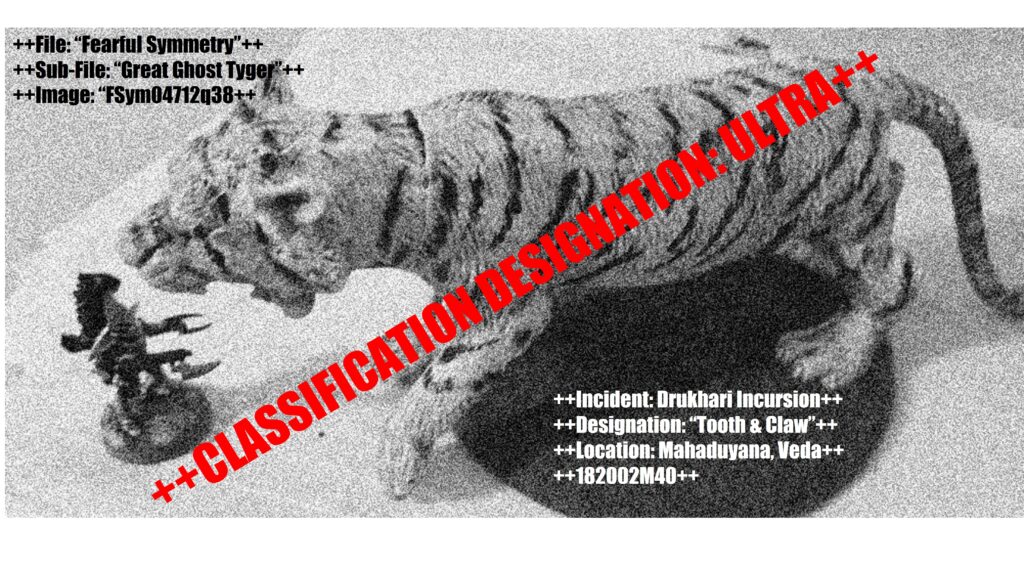
Opposed to them and to humankind are the “Rakshasas,” shape-shifting daemons, masters of illusion, who prey upon the unwary and unlucky. History records that shortly after the Tigers settled on Veda, they were attacked by the Rakshasas, who had been temporarily suppressed by the invading Drukhari, but were eager to regain their domination of the planet and its people.
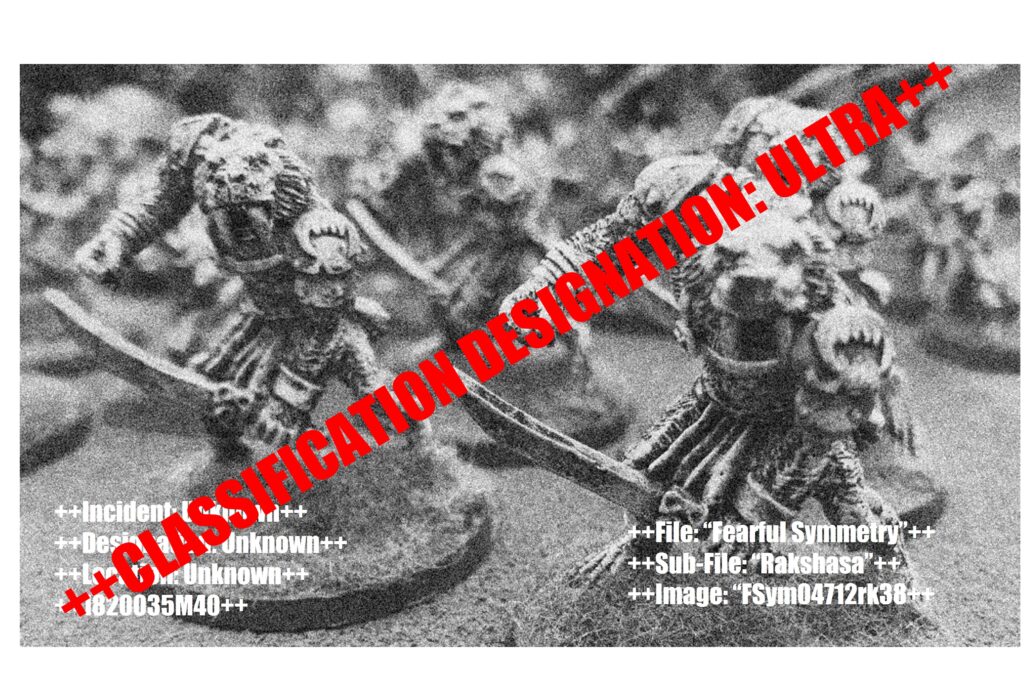
The Adeptus Astartes swiftly defeated the Rakshasas, and they were not heard of again in any significance before the ouster of Raja Shamhiir Taletri of the Sabretooth Tigers. He was removed from office several years ago and went Renegade, somehow summoning to him a host of Rakshasas who now serve as the “Fearful Symmetry.”

Tharalon
The only known city on Veda, Tharalon was a settlement built by a group of Drukhari whose name translates to “the Kabal of the Ozone (sic) Scorpions.” Supposedly exiled from Cormmorragh after losing a power struggle against Supreme Overlord Asdrubael Vect, the Ozone Scorpions seized Veda and enslaved the human population. To avoid detection by their enemies, the Scorpions built Tharalon deep beneath Veda, in one of the gigantic caverns found miles under the surface.
Though the Fighting Tigers drove the Ozone Scorpions from Veda, they did not learn of Tharalon until millennia later. While the Tigers were off-world, engaged in their first crusade to take the Ork-held Auros IX, the Ozone Scorpions returned to the city via the Webway, and attempted to retake the planet. They were defeated by a force of Space Wolves who came to Veda’s defense, and the city was destroyed.
As stated, my investigations are ongoing, and more reports will be forthcoming. My next report is on Fighting Tiger organization. Please contact me by the usual channels if you have follow-up questions or concerns.
Ave Imperator!
Varman Kumar, Inquisitor
Kenton Kilgore writes killer SF/F for young adults and adults who are still young. The Fighting Tigers of Veda appear in his latest novel, Stray Cats, which you can find here.

Check him out on kentonkilgore.com, and follow Kenton on Facebook for frequent posts on sci-fi, fantasy, and other speculative fiction. You can also catch him on Instagram, and find his books in softcover and for Kindle on Amazon.
